Our friend and colleague Justin Sempsrott, M.D. of Lifeguards International, performed a dramatic rescue at Montanita. His story and pictures follows below.
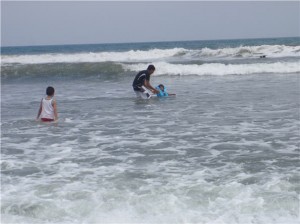
While walking down the beach, I spotted a small child in a homemade appearing life jacket. The child had just been placed in waist deep water and immediately began moving backwards in a rip current. I saw the parents move towards the child and I knew that the she would be easily reached, so I took out my camera and started shooting, in hopes of using the images in future lectures.
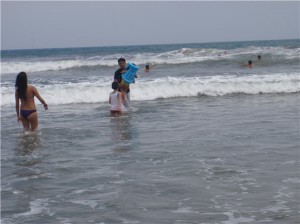
With the child in her parents arms, I snapped another couple pictures while looking through my camera. After lowering my camera, I saw two people being pulled further out to sea in that same rip current. If you look in the background of this picture, you can actually see the 2 soon to be patients and another person pointing to them. Despite their good intentions, the pointer and two onlookers to right eventually require rescue once they attempt to help.
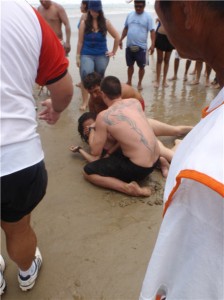
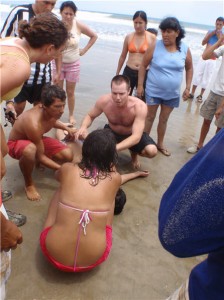
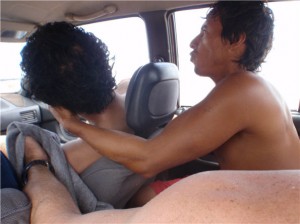
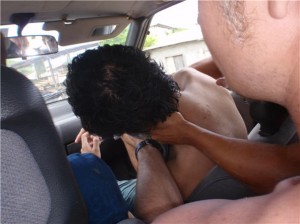

Once loaded into the vehicle, the female pt was alert and oriented and appropriately frightened. The male pt was GCS of 12-13, responding only to deep painful stimuli and continued to vomit. You can see Flores and I holding his head up and forward, using the towel to keep his airway clear. We also had to “work with” the driver, who wanted to pull over every time the pt vomited, so that we did not get his car dirty.
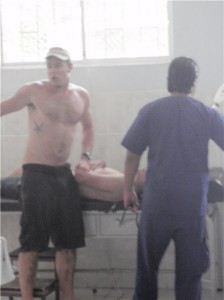
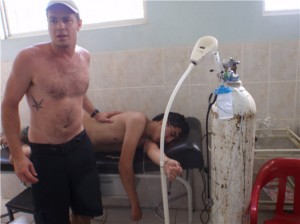
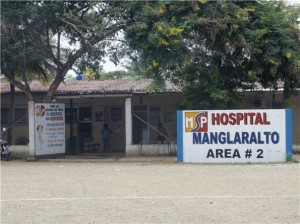
Upon arriving at the “hospital”, we proceeded to the 2 bed ED and placed the pt’s on oxygen via Nasal Cannula, which was all that was available. IV’s were placed and D5W started. In my best broken Spanish, I suggested more oxygen and a bronchodilating agent, but did not want to interfere. The emergency management consisted of IV B12, acetylcysteine, and dexamethasone. They also attempted to place an OG tube while the pt was still conscious and vomiting, without success.(Though technical terminology, this amounts to the drowning equivalent of leeches). During this time, the pt began to improve and 4 more pt’s arrived, representing the would-be rescuers who were pulled out by other surfers during this incident.
In Ecuador, upon completion of medical school, doctors do a 1 year internship at a clinic such as this one, then go into practice.